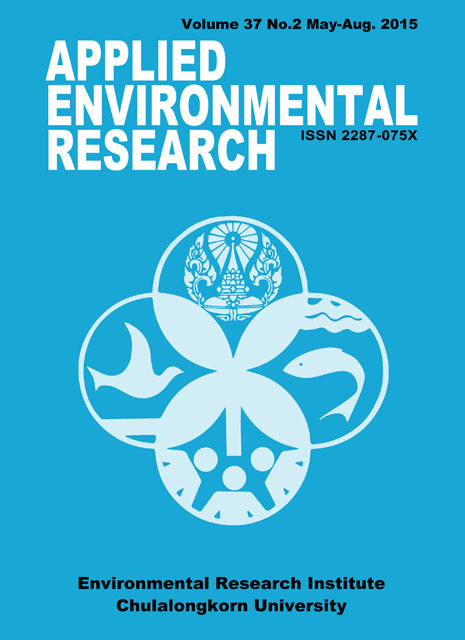An Appropriate Guideline for Participatory GIS: A Result from the Experience of Joint Management of Protected Area Project in Thailand
Main Article Content
Abstract
This study aims to examine the effectiveness of the Participatory Geographic Information System (PGIS) process as implemented through the Joint Management of Protected Areas (JoMPA) project. This article analyzes the process of local land use planning using PGIS through demarcation of special use zones. This was demonstrated to be a crucial process in the implementation of conservation projects. Implementation of PGIS involves several operational steps, brought together in this study using the method of action research. It is based on collaborative participation by stakeholders in the local area, leading all stakeholders to effective co-management of resources. The means of PGIS is also discussed here as a set of key tools, comprising geo-information acquisition and analysis tools. They are used mainly as participatory and interactive tools for communication and decision-making in collaborative planning or public meetings. The results of this implementation indicated that villagers could clearly understand the boundaries of land use areas, and the community regulations to facilitate practical co-management of land use by all local stakeholders. In addition, this study evaluates intensities of participation in 3 dimensions: facilitation, mediation and empowerment. This integrated approach including participatory local land use planning with PGIS is useful to identify problems in protected areas and also to develop strategies and solutions in partnership with local communities and external stake-holders, that together lead to a co-management approach for protected areas.
Article Details

This work is licensed under a Creative Commons Attribution-NonCommercial 4.0 International License.
Published articles are under the copyright of the Applied Environmental Research effective when the article is accepted for publication thus granting Applied Environmental Research all rights for the work so that both parties may be protected from the consequences of unauthorized use. Partially or totally publication of an article elsewhere is possible only after the consent from the editors.

